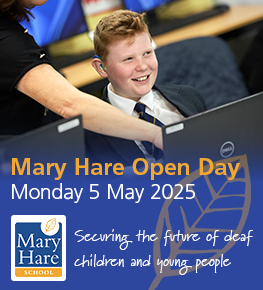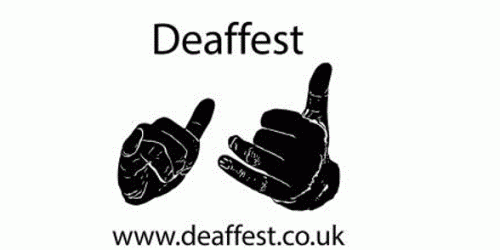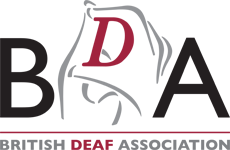5.4. Single word testing
Knowing the potential and actual access to speech in quiet allows the ToD to give scientific reasoning to explain the results of testing speech discrimination in background noise. All of the above allows the ToD to state clearly the child’s communication access needs (auditory/oral and signing) and to provide good evidence for extra funding for appropriate equipment and human support. Understanding ‘hearing for speech’ for a child is an essential part of the whole picture. Peter Keen BATOD January 2010, page 13
Word lists can be used for a variety of listening assessments. They can be used to assess student’s listening skills:
- when lip-reading is not possible
- when lip-reading is possible
- when wearing hearing aids
- when not wearing hearing aids
- when close to (1 metre)
- when at a distance (3 metres or more)
- when using a radio aid
- when not using a radio aid
- when in quiet
- when in noise
It is obviously possible to combine some of the above variants when testing. If testing a child’s functioning when using a radio aid it is necessary to do this at a distance of 3 metres or more, otherwise the hearing aid microphone can amplify your voice.
It can be used to demonstrate the impact of all equipment and check the hearing aids are giving the child optimal listening access.
Generally speaking, when testing children we know to be deaf, speech tests should be carried out using a normal conversational voice level (60-65dBA) or the voice level a teacher will use in a classroom when teaching the whole class (70-75dBA). Again this will depend upon what it is exactly you are seeking to discover. If you are testing a pupil you believe or suspect to have normal hearing, in at least one ear, you may decide to use a voice level of 40dBA, expecting the child to score 100%. When testing pupils you suspect to have Auditory Processing Disorder (APD) you should complete the same test twice; once in quiet and then in noise. A child with APD would score well on the first test, having normal hearing, but achieve a lower score on the second test.
It is also necessary to decide when and how often to complete a speech test. Times when it may be appropriate are when a child:
- is newly on your caseload
- has a change of hearing aids
- is due an annual review
- complains of difficulties hearing in class/school
- has stopped using their radio aid or hearing aids
- has a deteriorating level of deafness
It may be appropriate to complete a speech test annually on one of your regular visits and they can also be useful for other people to witness the child’s abilities in discriminating speech, eg parents, class teacher, etc.
Equipment needed:
- Word lists
- Sound level meter
- Hessian circle for concealing lip pattern
Single word speech tests involve a list of words for the listener to repeat exactly. Scoring can then be reported as a percentage or as a raw score.
Arthur Boothroyd (AB) Short Word List
Introduction
Devised in 1968 by Arthur Boothroyd, this test consists of eight lists of ten words. Each word is chosen to contain three phonemes, in consonant/vowel/consonant words.
Each phoneme is scored, so the word list gives a score out of 30.
The word lists may be used with live voice (with loudness measured using a sound level meter) or using an automated system.
The word lists have also been shortened by Soundbyte Solutions. They have selected the lists which are of most benefit when testing younger children.
Administering the Assessment:
The child has to repeat the word exactly as they hear it. They should repeat exactly what they think they heard and repeat even if it makes no sense to them. They should guess if they are not sure.
The sound level metres is used to record the level speech.
The first list presented without lip-reading is presented at a voice level where it is expected the child should achieve at least 80%.
The voice level is then decreased in approximately 10dB steps for each subsequent word list until the child scores approximately 50%.
40dBA is considered a minimal voice level for the discrimination of speech.
Scoring:
Scoring is by phoneme; three phonemes in each word. Each list is scored out of thirty and a percentage determined. For example the word given is ‘ship’. It has three phonemes: sh-i-p Response is ‘ship’ score 3 points or 10%. Response is ‘tip’ score 2 points or 7%. Response is ‘pit’ score 1 point or 3% .Some testers prefer to give a score of 10% to each word and convert directly to a percentage
Procedure/testing/information:
For formal testing please see Parrot test – this is the procedure for informal testing.
- The tester records listening conditions for each list (live or recorded voice, distance from listener, loudness of voice, use of hearing technology, with or without lip patterns, level of background noise).
- The tester says each word and the listener repeats what they have heard. The full ten-word list should be completed in each listening condition.
- The tester records which phonemes are repeated. Each phoneme is scored so each word is worth three points.
- Add up the total number of correct phonemes out of 30 and divide by 0.3 to give a percentage score.
Considerations for QToDs:
- This assessment can only be used with children who are reliably able to repeat the full range of speech sounds.
- Live voice testing allows comparison of performance, with and without lip patterns, and in different, realistic school settings. However, be aware when covering lip patterns that the quality and volume of the speech is equal to uncovered speech.
- The use of single words means that there is no context to enable the listener to guess at the words.
- The scoring of each word into individual phonemes allows analysis into which phonemes are not being heard consistently; this can be particularly useful in explaining to mainstream teachers why a child has spelling errors or evidencing that the child is not hearing word endings. This may also be particularly valuable when looking at why a child is struggling with a synthetic phonics approach to reading.
- When using the test with lip patterns, it is important to remember that some phonemes are easier to lipread than others, and this test does not take that into account.
- Some of the words are now dated (the list was created in 1968) and may be less appropriate for EAL children.
Further reading:
Soundbtyes Solutions AB Word list scoring sheet
PubMed International Journal of Audiology, 2017 Nov;56(11):870-875. ‘The clinical use of Arthur Boothroyd (AB) word lists in Australia: exploring evidence-based practice’
Manchester Junior Word List
The Manchester Word List was originally developed by T.J. Watson in 1957 and was specifically designed for testing deaf children from the age of 6. The test was revised and shortened.
The short lists can be found on the Soundbtye Solutions website.
Administering the Assessment:
Say the word to the child and they repeat the word to you exactly as it is said.
A new list should be used for each type of assessment and different lists later in the support.
Scoring is one mark per word.
The teacher should use a sound level metre for accurate speech level and this should be held at ear level to the child.
Scoring:
This is one mark per word and expressed as a percentage out of 100.
Considerations for QToDs:
This assessment can only be used with children who are reliably able to repeat the full range of speech sounds.
Live voice testing allows comparing of performance with and without lip patterns and in different realistic school settings. However, be aware when covering lip patterns that the quality and volume of the speech is equal to uncovered speech.
The use of single words means that there is no context to enable the listener to guess at the words.
Next pages in this section
5.5 Sentence testing
5.6 Automated tests
5.7 Parent/guardian reports (under construction)
5.8 Teacher reports (under construction)
5.9 Children and young people reports (under construction)
Previous pages in this section
Other sections
- Section 1 Anatomy and physiology of the ear
- Section 2 Aetiology and types of deafness
- Section 3 Auditory perception and hearing testing
- Section 4 Acoustics and physics of sound
- Section 6 Hearing technologies




